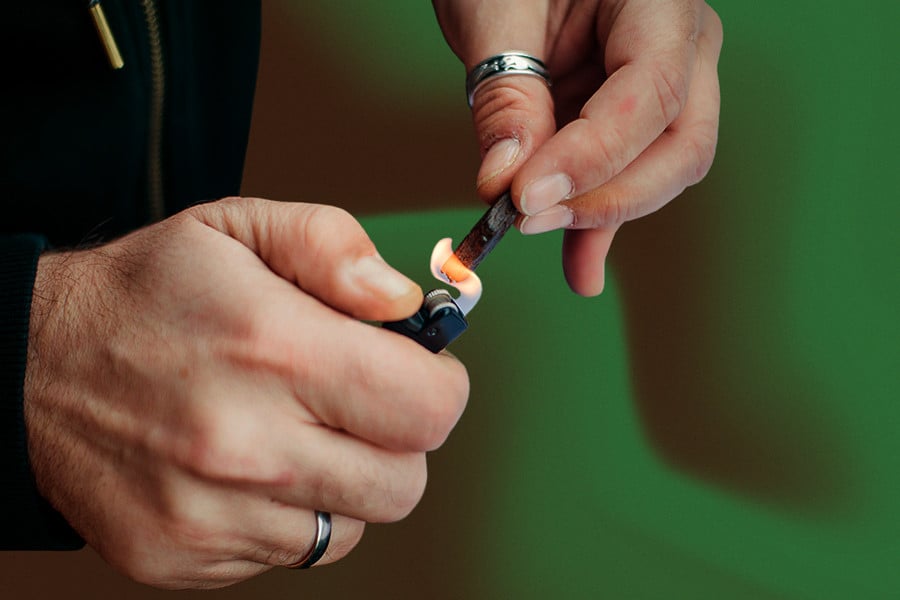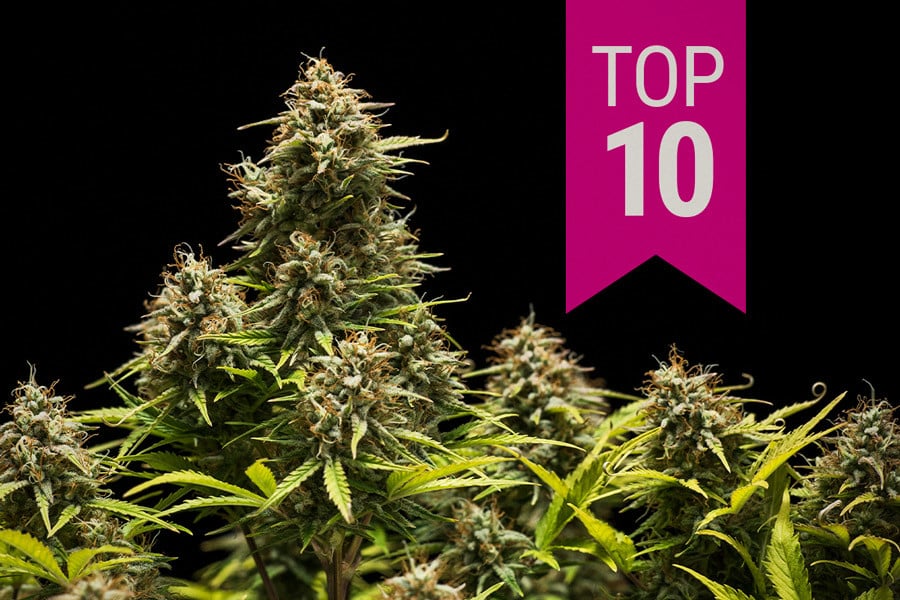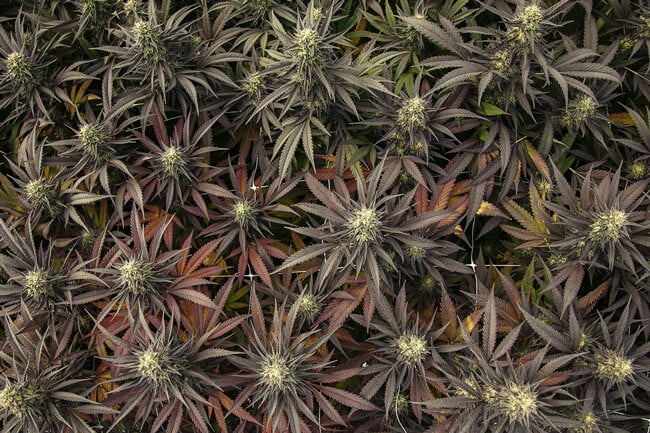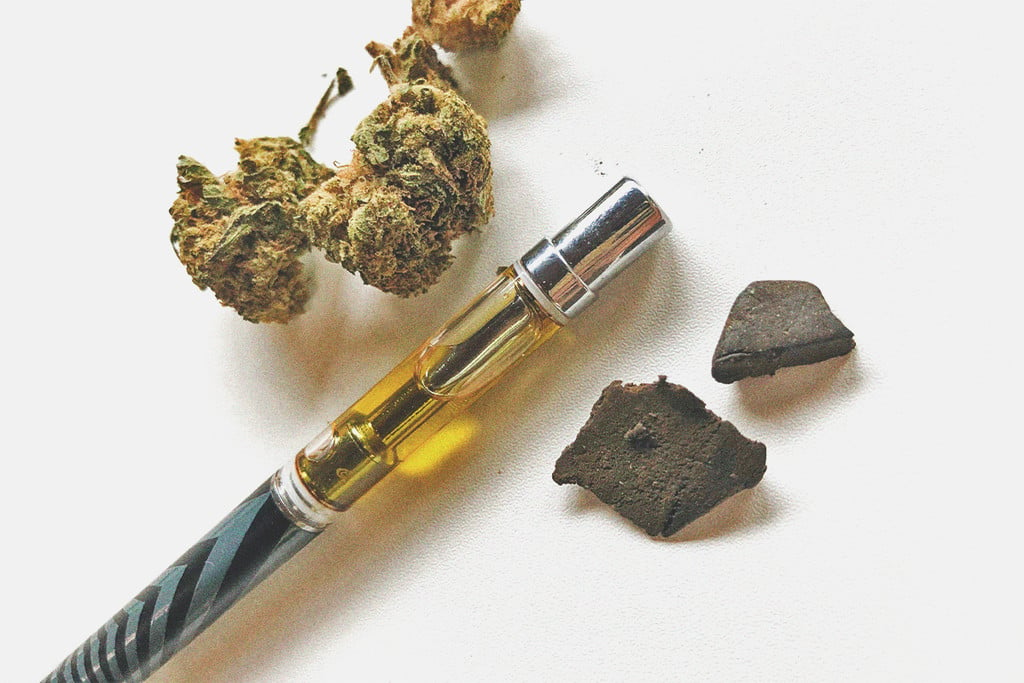.
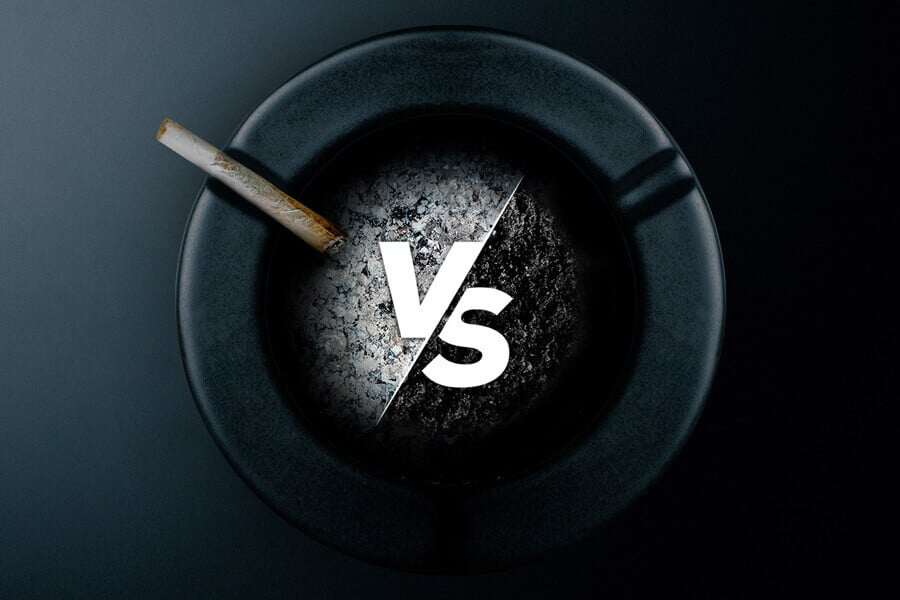
White vs Black Cannabis Ash: Does Colour Matter?
Many theories circulate the cannabis community. Some turn out to be true, whereas others are nothing but hearsay. So, how does the cannabis ash colour debate shake out when it comes to factual accuracy? Does white ash indicate good weed? Does black ash suggest something is wrong with your stash? Discover the truth below!
Contents:
- The white vs black ash controversy: a primer
- The shaky science behind ash colour
- Proposed factors that affect cannabis ash colour
- Is ash colour a reliable way to assess cannabis quality?
- How to properly assess weed ash colour
- Alternative means of assessing the quality of your weed
- Factors that influence the quality of weed
- White vs black ash: a poor indicator of cannabis quality
Spend any amount of time passing a joint around a coffee table with seasoned smokers, and you’ll quickly become exposed to some quintessential cannabis controversy. Various debates continue to rage in the world of weed, from the efficacy of holding in a hit to the accuracy of the terms “indica” and “sativa” when describing the effects of a strain. Among these contested topics, the idea that ash colour indicates bud quality remains one of the most argued.
Some cannabis users stand by the idea that white ash signifies pure, flushed, and high-grade weed, whereas black ash points to poor-quality bud. In contrast, others completely disregard this distinction and take the view that ash colour represents nothing of importance. So, should you care about ash colour when smoking weed? Let’s dive into both sides of the debate below.
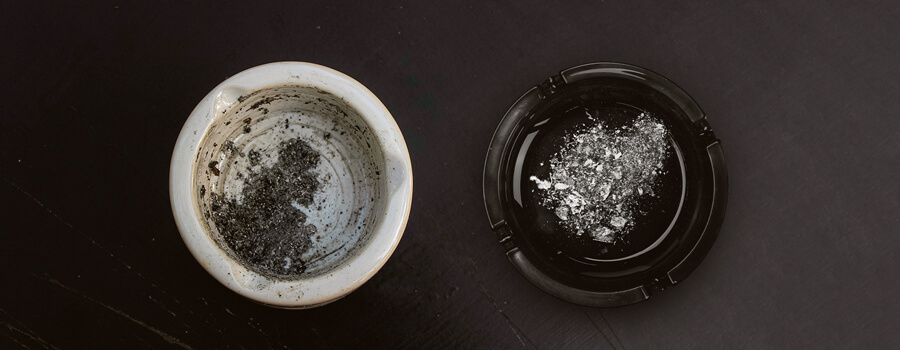
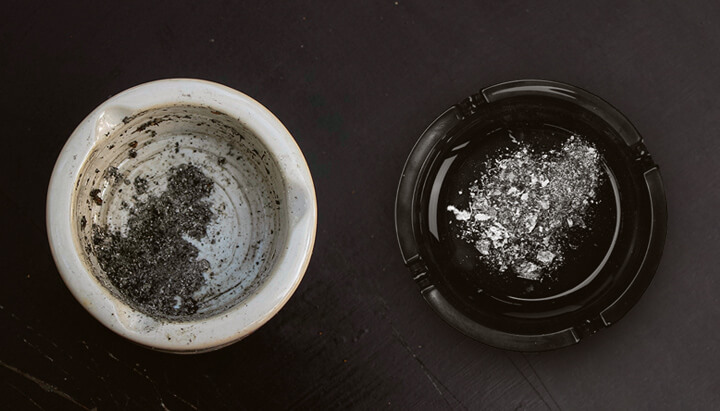
The White vs Black Ash Controversy: A Primer
In truth, most cannabis users probably haven’t considered the colour of the ash at the end of their joints. However, some connoisseurs among us not only hold it as an indication of flower quality in general, but use this metric as a way to highlight the quality of their homegrown flowers. To them, white ash testifies to correct cultivation, flushing, drying, and curing—resulting in finer flowers and a superior smoke.
However, this conclusion rests only on anecdotal accounts and loses its weight when we consider the subjective experience of other cultivators and smokers. Rather than deriding white ash and praising black ash, this other camp simply disregards the importance of ash colour altogether, putting it down to pseudoscience and superstition.
The Shaky Science Behind Ash Colour
It will likely come as no surprise that scientific investigation has yet to clear up the hazy air shrouding the white ash vs black ash weed debate. As the cannabis industry continues to expand and researchers focus their efforts on breeding, agronomy, and pharmacology, the colour of cannabis ash is simply not a pressing issue for most. For now, the debate remains firmly in the domain of lay growers and smokers. However, some experts in the field of cannabis science have flung their opinions into the melee.
Proposed Factors That Affect Cannabis Ash Colour
A long list of factors impact the overall quality of cannabis, including genetics, cultivation methods, the growing medium, and post-harvest processing. But do these variables also influence weed ash colour? Find out which factors are proposed as the most impactful when it comes to white vs black ash.
-
Flushing
Conventional wisdom has, for decades, dictated that flushing weed before harvest increases the quality of cannabis flowers. In this vein of thinking, withholding nutrients for a matter of days or weeks causes a weed plant to use up its nutrient stores, essentially metabolising compounds that taste harsh when smoked, resulting in a smoother and more pleasant smoking experience. However, even the act of flushing is a controversial topic, with individuals such as cannabis biologist Dr Robert Flannery contesting the concept. His master’s thesis[1], titled “Irrigation Management Strategies for Medical Cannabis in Controlled Environments”, found that, in contrast to common conceptions, flushing does little to remove any significant amount of nutrients from cannabis flowers.
All that said, many growers and smokers still propose that this technique alters the phytochemistry of flowers to some degree, resulting in buds that create “desirable” white ash. However, growers who don’t flush also report white ash when smoking their homegrown—so the jury is still out.
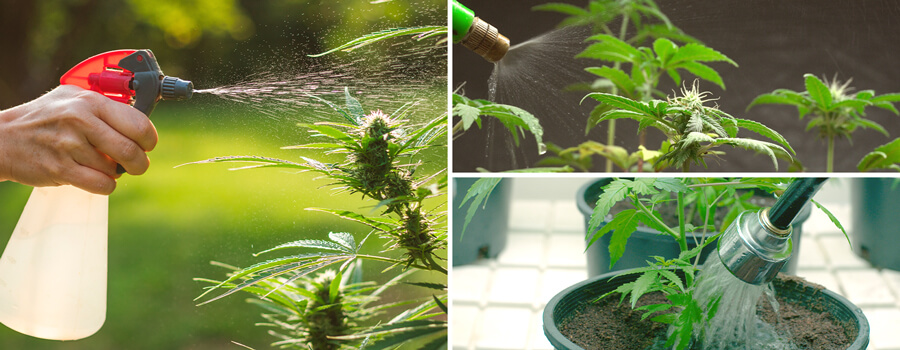

-
Growing Medium
While research has yet to conclude if and how the growing medium impacts the ash colour of the buds, some growers have found that certain media broadly benefit flower quality. Today, many growers are migrating away from hydroponics and synthetic nutrients, and towards “living soil” systems that utilise organic nutrients and rely on the microbial members of the soil food web to deliver nutrients to their plants. Adherents to this cultivation philosophy often report producing higher-quality weed, which, following general opinion, would likely produce white ash.
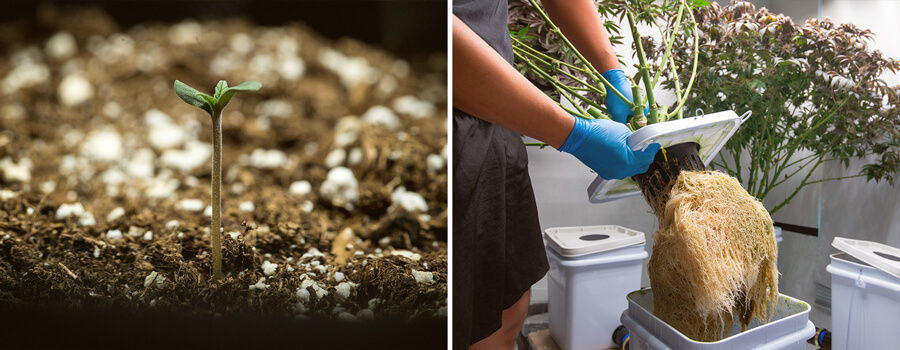
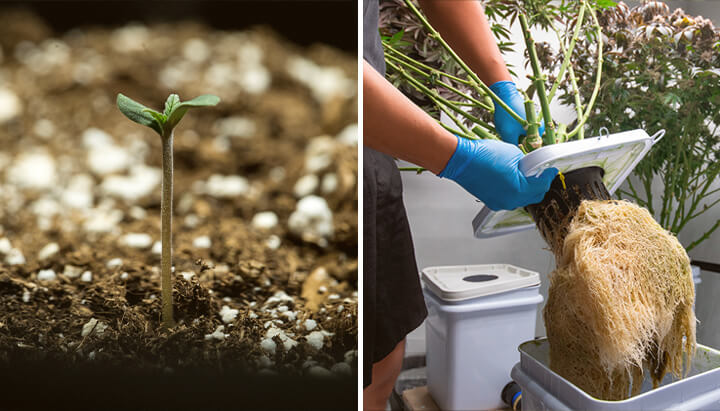
-
Combustion Temperature
Regardless of flushing and other cultivation methods, one thing that very well may underpin ash colour is combustion temperature. Josh Wurzer[2], co-founder of SC Labs in California, has stated that black ash results from incomplete combustion. Too much moisture and not enough oxygen can impact combustion temperature, resulting in cannabis that burns improperly and forms black ash.
-
Moisture Content
Building on the above, drying and curing may hold significant sway over whether weed produces black or white ash. These post-harvest processes remove excess moisture, which not only reduces the probability of mould but enables buds to burn at a higher temperature, increasing the likelihood of white ash colour.
-
Additives and Contaminants
Some growers see black ash as a sign of contamination, and white ash as a sign of purity. According to this outlook, black ash can signal that the buds are contaminated with heavy metals, pesticides, and other chemicals. While a possibility, no research exists to support this claim.
-
Resin
The impact of resin also throws another spanner into the works. Wurzer has stated that increased amounts of resin can cause cannabis to produce black ash by inhibiting proper combustion. However, high resin content itself has traditionally indicated high bud quality, as this viscous substance contains cannabinoids such as THC as well as aromatic terpenes that contribute to taste and aroma.
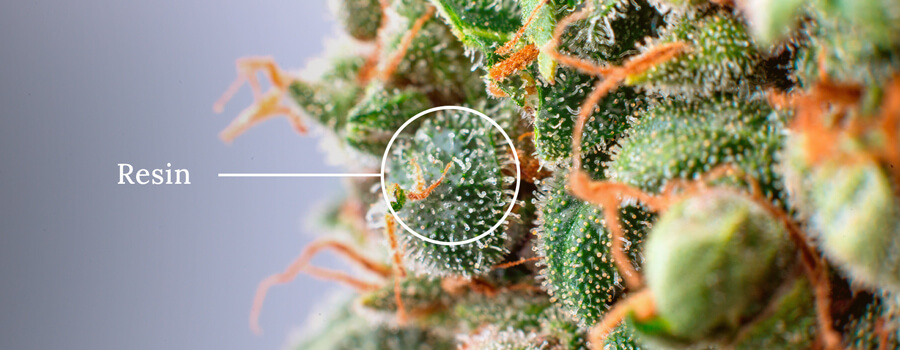
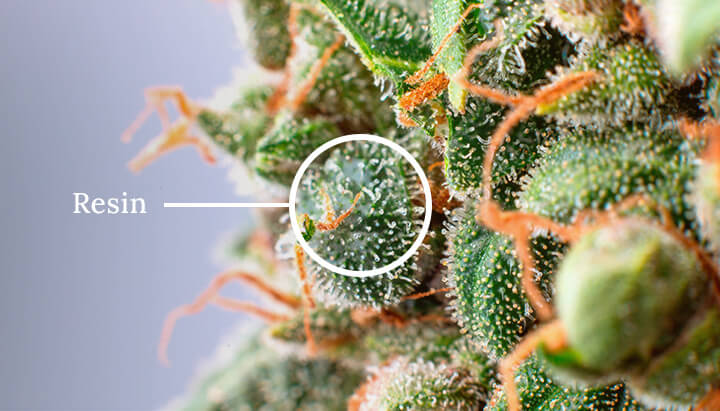
Is Ash Colour a Reliable Way to Assess Cannabis Quality?
Does white ash mean good weed? Not necessarily. Ultimately, there are much better ways to judge the quality of cannabis. Ash colour fails to inform users of the most important properties and overall calibre of their herb. In some circumstances, it could simply indicate improper combustion; in others, it could be down to the efficacy of the drying and curing processes post-harvest.
How to Properly Assess Weed Ash Colour
Either way, if you’re still keen to assess the colour of your weed ash, you can get a good gauge of the colour simply using the naked eye. Just tap the ash from the end of your joint, or scoop it out of a bong or pipe bowl, and place it into an ashtray. Use a dabbing tool to break it apart to get a good look at the interior and exterior of the bundle to make a good judgement on the overall colour.
If you want to take your ash assessment slightly more seriously, you can use simple magnification. A magnifying glass or jeweller's loupe will help you get a close look if you’re struggling to figure out if it’s mostly white or black.
Alternative Means of Assessing the Quality of Your Weed
As mentioned, there are far better ways to assess the quality of your cannabis than ash colour. Discover the best ways to find out if you’re smoking high-grade or poor-quality buds below.
-
Visual Inspection
Simply grab a bud and take a close look. It should have a good layer of trichomes and feel sticky, but not wet. It should also be neatly manicured with no large sugar leaves remaining. Immediately discard any buds that show signs of mould.
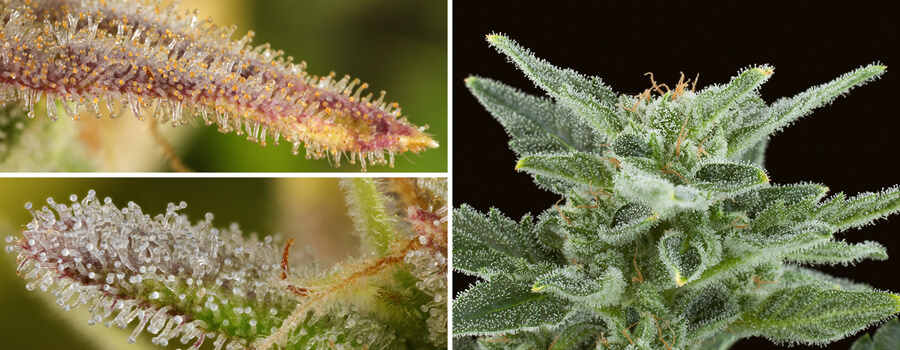
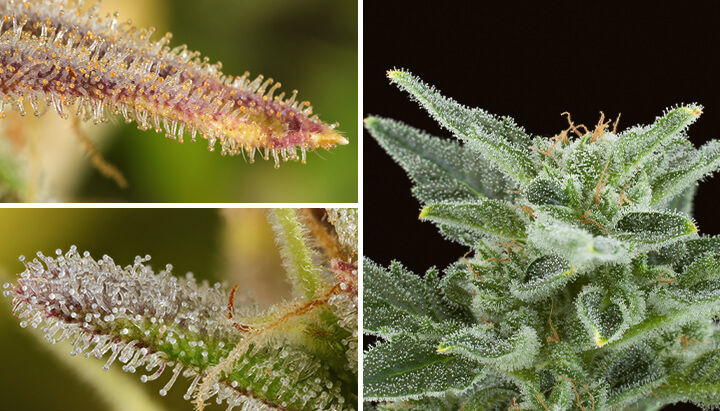
-
Aroma and Flavour
Regardless of ash colour, if your bud smells and tastes good before and during smoking, then it’s likely of high quality. All strains feature a slightly different aroma and flavour; expect anything from wood, pine, and pepper to fruit, candy, and skunk. Poorly grown, dried, and cured weed often smells like grass, hay, or mildew.
-
Moisture Content
Not only does excess moisture produce black ash, but it detracts from the flavour of a bud, making it harsh to smoke. Not only that, but moisture can cause buds to develop mould during storage. Properly processed cannabis flowers should feel sticky but suitably dry. Overly moist or damp buds are a sign of improper post-harvest and/or storage processes.
Factors That Influence the Quality of Weed
If you grow your own weed, you have a good amount of control over the final quality of your harvest. Discover the key factors that will enhance your results.
-
Genetics
Strain choice plays perhaps the largest role in final weed quality. Aside from choosing a variety that matches your preferences, aim to source genetics that are known to consistently produce quality results. Unless you’re a breeder, limit your scope to feminised seeds that produce female buds, as this will give you the best bang for your buck.
-
Abiotic and Biotic Stress
Small amounts of abiotic stress (i.e. stress from non-living sources) can help plants thrive and produce more cannabinoids and terpenes. However, too much stress in the form of drought, overwatering, or excessive training and defoliation can cause stunted growth, low yields, and poor-quality flowers. Meanwhile, biotic stress—from living sources—such as pest insects and pathogens can contaminate buds and make them dangerous to smoke.
-
Microbiology and Terroir
Aim to cultivate in living soil. Not only will this approach increase the fertility of your soil year after year, but research suggests that a healthy population of beneficial microbes plays a key role in weed flower quality when it comes to potency and taste. The concept of terroir—the environmental factors that impact crop taste and characteristics—also means your local climate will produce a unique phytochemical profile in your flowers when grown well.
-
Flushing
While research suggests that flushing flowers doesn’t do much in the way of purging nutrients, some growers swear by its ability to improve taste and smoothness. Flushing may impact the concentration of certain harsh phytochemicals, such as chlorophyll, to produce a more pleasant smoke.
-
Brix
If you’re a serious cannabis connoisseur, you probably own a refractometer that measures Brix levels. This handy device allows for a quantitative assessment of bud quality. You should aim to maintain a Brix level of 12–15% for the healthiest plants and highest-quality weed possible.
-
Drying and Curing
Drying and curing are among the most important factors when it comes to cannabis quality. Done correctly, these processes preserve the shelf-life of buds and give rise to a smooth and flavourful smoke.
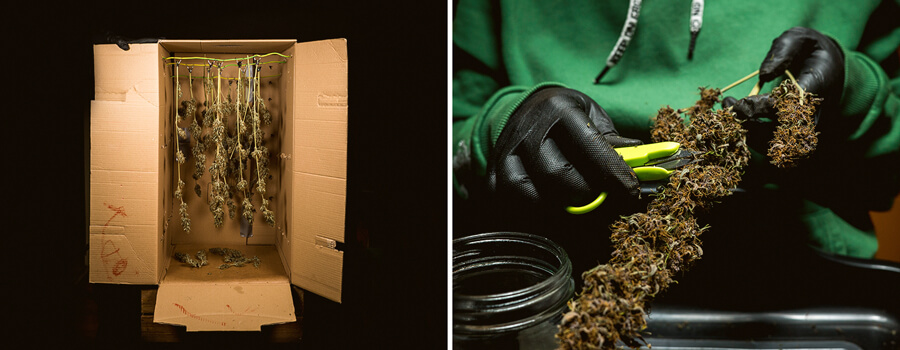

White vs Black Ash: A Poor Indicator of Cannabis Quality
Alongside the misuse of the terms “indica” and “sativa”, the importance of ash colour to the cannabis smoking experience is likely much less relevant than some smokers think. While black ash might indicate improper combustion due to excess moisture, it can also point to high levels of resin. White ash, on the other hand, likely arises due to higher combustion temperatures, but by no means suggests superior quality. Instead of relying on ash colour, consider the variables of flavour and aroma, moisture content, and the way your weed looks and feels when attempting to assess its quality.
- Irrigation Management Strategies for Medical Cannabis in Controlled Environments https://atrium.lib.uoguelph.ca
- JOSH WURZER | The National Cannabis Industry Association https://thecannabisindustry.org


























